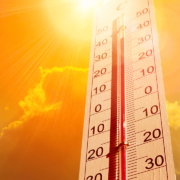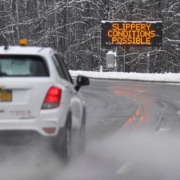Novel therapy shows efficacy against cancer in children
The new therapy was successful in saving a group of children who were destined to die without treatment.
A novel supercharged immune cell treatment appears to work against tumors in children with a certain type of cancer, researchers reported Wednesday.
Nine of 27 children in an Italian study were free of cancer six weeks after treatment, although two later relapsed and died.
So-called chimeric antigen receptor T-cell therapy (or CAR T-cell therapy) is already used to help the immune system fight leukemia and other blood cancers.
It is the first time that researchers have achieved such encouraging results in solid tumors, the experts said, raising hope that the therapy could be used against cancers of other types.
It is too early to consider the treatment a cure for neuroblastoma, a cancer of nerve tissue that often begins in childhood in the adrenal glands and abdomen.
Ordinary treatment can be very severe: chemotherapy, surgery, and radiation, depending on the stage of the cancer and other factors. The children in the study had cancers that had come back or were particularly difficult to treat.
Eleven of the children were alive when the study ended after three years, including some who partially responded to the therapy and received repeated doses of modified cells.
“All of these children were destined to die without the treatment,” said Dr. Carl June of the University of Pennsylvania, a pioneer in CAR T-cell therapy but not involved in the new research.
“No one has ever had patients respond this way before, so we don’t know where they’ll be a decade from now,” June said. “There will certainly be more testing based on these exciting results.”
CAR T cell therapy harnesses the immune system to create “living drugs” capable of seeking out and destroying tumors. T cells are collected from the patient’s blood, boosted in the laboratory, and then returned intravenously to the patient, where they continue to multiply in his body.
The US Food and Drug Administration (FAA) has approved six CAR T-cell therapies for blood cancers. Some patients have been cured. But it has not been successful in solid tumors.
The most recent study was conducted by researchers at the Vatican’s Infant Jesus Pediatric Hospital in Rome.
“They seem to have found a unique combination” to get the modified cells to multiply initially and then last long enough to continue their work of killing cancer, said Dr. Robbie Majzner of the Stanford University School of Medicine, who he was not involved in the new study.
Dr. Franco Locatelli, co-author of the study, said that the experts also included a safety mechanism to eliminate the cells in case of a severe reaction in the patient.
When a patient had problems, they activated and demonstrated the safety mechanism, but later determined that the patient’s problem was due to non-CAR T-cell cerebral hemorrhage.
Many children had a common side effect of CAR T-cell therapy, an immune reaction called a “cytokine storm.” It can have severe levels but was mild in most cases, the researchers reported.
They concluded that CAR T cell therapy was “feasible and safe to treat neuroblastoma.”
Source: vozdeamerica.com







